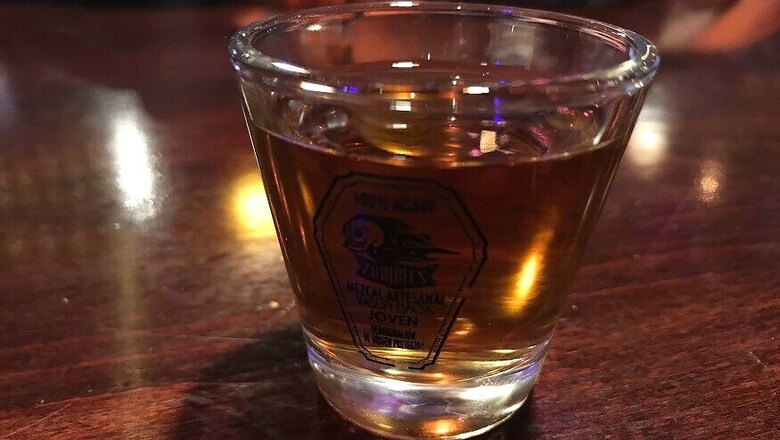
views
 How would you take yourself to a bottle of booze that has a worm in it?
How would you take yourself to a bottle of booze that has a worm in it?
Well, don't raise the roof because it is absolutely kosher for mezcal, an alcoholic spirit from Mexico, to house a worm, precisely speaking, a larva, in a bottle (though you don't find them in all mezcal bottles).
Mezcal is the cousin of the more popular, tequila.
While the former can be made from any one of the thirty types of agave plants (a genus of monocots native to the arid regions of South America), tequila is distilled mostly from blu agave (You cannot call a drink tequila unless it contains a minimum of 51% blue agave). While Tequila comes from Jalisco in northwestern Mexico while Mezcal finds its home in the state of Oaxaca and some regions of Guerrero and Michoacan, in southern Mexico. And tequila is mass-manufactured while mezcal like Scotch whisky is still made using traditional methods that bring into sharp relief the art and skill of brewers.
From the start, mezcal had been relinquished to the shades where it grew in small degrees, while its savvy cousin tequila luxuriated itself in all the attention it got from the US and elsewhere. So the idea of a larva in a bottle could only be a desperate measure.
It was in the 1950s that the trend began. Legend has it that it was an art student and entrepreneur Jacobo Lozano Paez who pulled this trick of putting a 'worm' in a mezcal bottle. But why a worm!
Agave farmers in South America were familiar with the larvae of a moth named "gusano de maguey" that feeds off the maguey plant (If they don't end up in a bottle, drowned in booze, they are on the way of growing wings to become a beautiful moth called the Mariposa). Many Mexicans had already taken a liking to the taste of the larvae - raw and outside the bottle. Could it alter the taste of mezcal, they wondered! Could it lift mezcal from the ignominy it suffered living in the neighborhood of tequila!
A well-preserved larva in the booze speaks about the purity of mezcal. But when did people begin to associate "gusano" with vitality and virility! A drink that is believed to pep up a sapped libido is a sure bet to win. Poor mezcal finally found its footing.
Well, if you're not the squeamish type, and decide to taste the drink - worm included -, be choosy. Check whether the worm you get with the bottle is "gusano rojo", the larva that feeds on the heart of the maguey (the part of the plant that's roasted and made into mezcal). The less desirable. "Gusano de oro", on the other hand, feeds on the leaves of the plant. Go for the heart!
But many take the worm only as a marketing ploy to differentiate mezcal from tequila which is flooding the markets.
Years ago, the Mexican Government, due to hygienic reasons, intervened and asked the distillers to leave the larvae alone, if they wanted certification. A spate of protests ensued. If there is no worm, there will be no sales, the distillers said. Only after they could prove that the worm does not spoil the booze chemically, they won the rights to keep it in the bottles.
As far as the virility part, well, only the worm knows how far it can stretch up to wild imaginings and expectations.
(Manu Remakant is a freelance writer who also runs a video blog - A Cup of Kavitha - introducing world poetry to Malayalees. Views expressed here are personal)




















Comments
0 comment